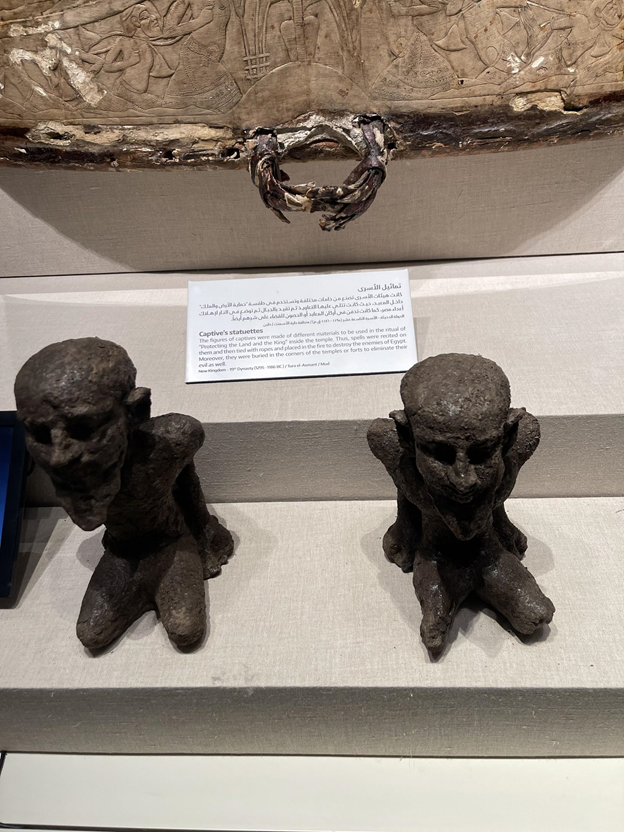The society of Ancient Egypt is closely related to religion and mythology originating from the pantheon of gods. The king, as the state’s ruler, was also considered a divine descendant and part of a religious cult. The period of the New Kingdom was marked for Egypt by the rapid development of the state and successful conquests. Although the king was regarded as the owner of divine attributes, he was still not equal to the gods. Thus, the Egyptians needed rituals designed to attract the gods’ favor for the king’s successful military campaigns. Captive’s statuettes show that the king in society performed the role of mediator between gods and people and fulfilled their divine will in the state’s interests.

Captive’s statuettes shown in figure 1 above are from 1295-1186 BC and refer to the New Kingdom period of the 19th Dynasty. Such figurines had a ritual purpose and could be made of various materials. In particular, they were used in the rituals of protection of the land and the king, which were conducted in temples to eliminate the enemies of the king of Egypt. The statuettes were inscribed with spells, after which they were tied with ropes and placed in the fire.
This artifact characterizes the special social system of Egypt of the New Kingdom, which emphasized the supremacy and divine essence of the ruler. Throughout the history of Ancient Egypt, the king was not only the head of state but also a necessary element of the cosmos (Silverman 108). The king was revered as the earthly incarnation of the god Horus, making him a key figure in the vast kingship mythology (Silverman 108). Thus, the king performed as a secular function of government and also acted as a religious leader. However, the gods also gave the king a special role as a military commander of the Egyptian troops in the fight against enemies, which acquired particular importance during the New Kingdom period (Silverman 108; Ikram 98). In particular, the rulers of the New Kingdom were actively involved in both military campaigns to expand the lands of Egypt, as well as the construction of temples and the strengthening of the cult.
The statuettes of captives had a symbolic meaning, showing the greatness of the king of Egypt before the rulers of neighboring territories. In particular, the period of the New Kingdom was marked by active expansion both north and south (Ikram 101). Significant conquests in Nubia, as well as the spread of the cult through the construction of temples there, were an important part of the policy (Ikram 101). The mythological status of the king of Egypt implies his superiority over other territories, as shown in the figurines. Statuettes depict captives on their knees, which are later bound and burned. This symbolism refers to the way the divine king conquers his enemies and annexes territories to Egypt, suppressing the will and expanding the cult.
Despite the fact that the rulers were associated with the gods and were considered their personifications, there was still a separation, which explains the need for such rituals. In particular, “rulers had some supernatural attributes, but these were gifts from the gods” (Silverman 112). Thus, the statuettes clarify the Egyptians’ perception of the king and his relationship with the gods. They venerated him as the descendant of the gods on earth but did not worship him as deities. They still needed the grace of the gods that they would bestow on the ruler in order for Egypt to flourish.
Works Cited
Ikram, Salima. Ancient Egypt: An Introduction. The American University in Cairo Press, 2009.
Silverman, David P. Ancient Egypt. Oxford University Press, 2003.